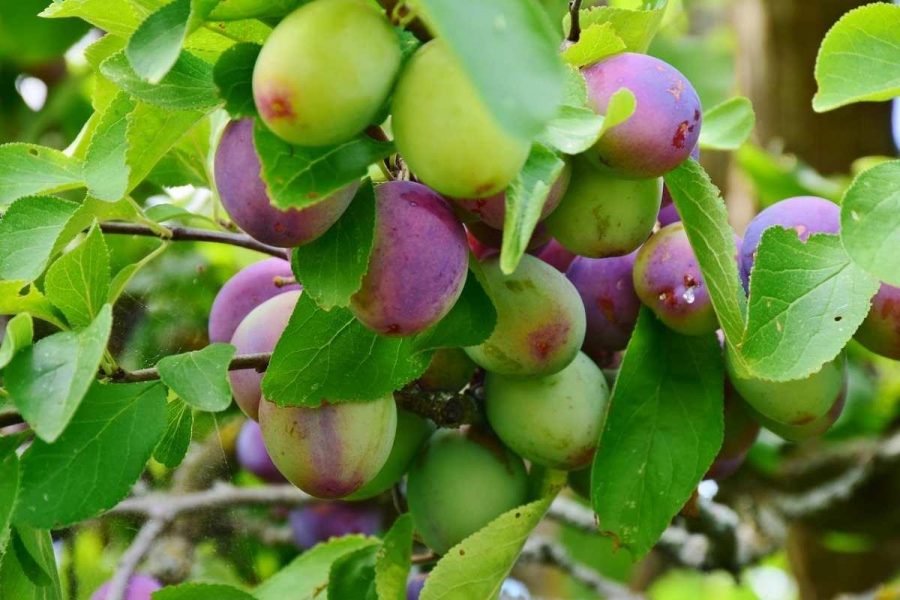In comparison to almost all other fruits plants, plum plants are highly oriented, limited, and require minimal care. Plum is high in vitamin A, B (thiamine), riboflavin, calcium, phosphorus, and iron. The proper balance of acidity and sugar is beneficial in the production of jams and squashes. The most well-known prune is the dry plum. The prunes have excellent Ayurvedic healing properties. Pruning liquid is helpful in treating jaundice as well as summer bite.
Climate for Plum Farming
The temperature range for plum farming should be 20-30°C. And you can complete sowing operations at 25-30°C. The rainfall must be 200-300mm for plum farming. And the harvesting takes palace at a temperature of 20-25°C.
Soil Requirements
Plum grows in a variety of soils, including deep fertile and well-drained loamy soil with a pH of 5.5-6.5. The land must be free of hardpan, waterlogging, and extreme salts. You should prepare the ground with the help of farming machines like Swaraj 742 and others.
Popular Varieties
- Alubokhara: The plant is standing upright and dispersing. When compared to other cultivars, the berries are larger. When compared to Kala Amritsari, the yield is significantly lower. The epicarp has yellowish colour with reddish patches. The pulp is rich and sweetened.
- Satluj Purple: This is a self-fertile cultivar that also requires Kala Amritsari as a pollinator. Kala Amritsari plum should be established as an alternating plant in other rows to produce decent fruits. The berry has average dimensions and weighs 25-30g. The epicarp is dense, and the mesocarp has a yellowish tinted firm body. Berries are typically eaten fresh. It ripens in early May and produces 35-40 kg of fruit per tree.
- Kala Amritsari: It is the most popular cultivar in the plains. Berries are medium in size and shape, with rounded oblate edges. When the epicarp ripens, it turns a dark purple colour. On the other hand, the mesocarp has a yellowish tint and succulent pulp. Fruits have a mildly acidic flavour. In addition, Berry ripens in the second half of May. The fruits are well-known for producing jam and squash.
- Titron: This cultivar is self-fruitful, but the yield increases when the Alucha variety is used as a polliniser. Titron variety is not as extensive as Kala Amritsari. The berry size is smaller than Satluj Purple and Kala Amritsari. In comparison to Kala Amritsari, the epicarp is thin. The flesh is yellow and slightly juicy. Fruits yield 30-35 kg per tree.
- Kataruchak: The cultivar was developed in the small town of Kataruchak in the Gurdaspur region of Punjab. Because of the availability of white bloom on the fruit’s flesh, the fruits are overpriced compared to Kala Amritsari. The berry is large in size, heart-shaped, and purplish in colour. It matures shortly after Kala Amritsari. Fruits yield 45-50 kg per tree. Berry is ideal for jam making as well as squash preparation.
Land Preparation
Do ploughing, cross ploughing, and levelling of the land. Prepare the ground; there is no water stagnation in the field. You should also use robust farm machines like Swaraj 963 and others.
Sowing
Planting takes place in the first two weeks of January. Plum plants should be spaced 15cm apart by 30cm apart. Plant the tree 6m X 6m apart from the row and between plants. Seedlings are sown directly.
Propagation
Plums could be efficiently propagated on peach, plum, and apricot rootstocks. Peach rootstock is recommended for sandy ground areas, while plum Kabul Green Gage cuttings and apricot rootstocks work well in heavy garden soil. Kala Amritsari cuttings that have not yet bloomed are helpful right away. To accomplish this, stem cuttings are ready in the first week of December, and after callusing for about 30 days, the area is increased from 15cm x 30cm in January.
Weed Control
Pre-emergence Diuron with Terbacil 1.2kg / acre or Simazine 1.6kg/acre is recommended. To control weeds, apply glyphosate at 320ml/acre post-emergence.
Plant Protection
- Brown rot (fungus): Spray with sulfur at the pre-blossom stage
- Black knot (fungus): Cut at least 10cm below swellings
- Plum curculios (weevil): Pick up fallen fruits frequently
- Leaf-curl plum aphids: Sprays of horticultural oil
Irrigation
Plums have irregular roots and mature quickly, necessitating adequate moisture throughout the development period. Irrigation timing can be affected by a variety of factors such as soil type, weather, and the type of significant fruit trees. You could use regular irrigation weekly in April, May, and June. To prevent flowering, little irrigation is provided during the complete blossom phase, and minor irrigation is provided during the ripening stage. There is no need for irrigation in a rainy climate. You could extend the timeframe to twenty days in September, October, and November.
Harvesting
The maturity of plum fruit varies depending on the variety. The plum must fully ripen on the tree. The ripe fruit is used in multiple pickings and is packed with care.
Post Harvesting
Because plums are highly perishable, they must be adequately packed and stored at the proper temperature because they are chilling sensitive.
Stay tuned for more information on farming tips, tricks, and methods. Here’s our next blog, which will cover more farming tips and tricks.
